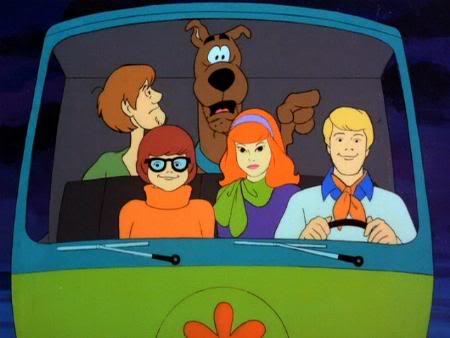Guys it’s been 8 months. It was a bad take.
I find I never actually look directly at an analogue speedometer, you kinda just know from the angle of the needle what speed you’re doing
New to driving maybe?
That’s probably why digital displays still have analog speedometer options. At a glance it’s easier to tell what’s happening with your speed, rev count, and other levels like fuel.
But much of that utility is useful for manuals and ICE-powered cars.
Unfortunately because of the digital spedometer, the analog one usually suffers.
My mid-2010s c-class has an analog spedometer which is absolutely useless as it does not have a full needle and the fonts, spacing and colors are made to blend in with the interior instead of being readable.
All this makes me use the digital one, which is very distracting and usually lagging behind, especially when quickly accelerating.
Reading very-fast-changing data is probably the only good argument I’ve seen for the superiority of analog guages in modern cars. A fast changing digital display is impossible to read. But practically speaking, when the data is changing that quickly, typically precision isn’t important.
If car companies cared (which they clearly don’t) they could make digital displays better, by having a low refresh rate when there is low acceleration (to avoid distracting the driver), increase the refresh rate under heavy acceleration to display more current data, and apply some kind of effect to the fast changing digits to convey a sense of how fast they’re changing even if they’re changing too fast to read. Think of the odometer style altitude readout on old airplanes, where even if you can’t read the number you can tell wtf is up by how fast the numbers are spinning by.
This isn’t to say that digital guages are better. They’re just different. It’s a personal preference thing.
But you’re absolutely right that the analog guage has suffered from neglectful design in recent years.
An analogue gauge is useful because you can see the rate of change not just the current value.
You can design a digital readout to intuitively provide the same. And I think you’re overstating the importance of rate of change in analog guages that you find in commuter cars.
Some sort of scale on the side/bottom of the screen would solve that easy enough. It’s only really useful when accelerating into the highway or from a red light, not terribly important.
deleted by creator
Not really, you never really check how fast the needle moves it’s a side effect of checking your speed. A scale by the numbers, or as a circle around the numbers, would have the same affect. You just noticed how fast it’s moving in your periphery as you check your speed.
More points of failure and less intuitive.
I disagree that it is inherently less intuitive, it depends on the design. You’re overthinking the points of failure part.
I think in this case analogue is actually easier to read. You don’t need to actually read any of the numbers to know how fast you’re driving, you just look at the angle of the needle.
The human brain is great at things like this, and less good at reading numbers, which is much more learnt.
My 2019 Jetta has a 100% digital instrument cluster. It’s currently broken…just a black screen. It’s neat how reliable analogue instruments are.
I personally hate the digital cluster, I would rather have analog one with display in middle. I don’t find that analog cluster needs more time to read.
Easier to read?
That would imply that an analog speedo is tough to read which is laughably wrong.
It can be? Not that it’s hard to read , but I felt it was harder to determine exact speeds in my last car. Am I going 41 of 40, 35 or 33. It’s not that big of a deal but I don’t really have that problem with digital.
Analog is occupied by speeds you will never use. 80 to 260 is useless to be and practically a waste of space for consumer cars.
Am I going 41 of 40
No speedo out there is accurate enough to distinguish between those two speeds.
This must be related to people in their 20’s not knowing how to read a traditional clock anymore.
Yeah, probably not. It’s just that digital is better, analog is just what folks are used to and that for some people means it’s automatically better. I grew up with analog, my first cars had analog and if I’ve never seen it again, I wouldn’t miss it.
deleted by creator
deleted by creator
You just wanted to show off your sick classic ride. And I for one need to see the outside now.
deleted by creator
You’re absolutely right that well designed analog guages are glancable. But that only really matters if you’re racing. If the difference between glancing for 0.4 seconds and 0.5 seconds matters, then you’re driving too aggressively for a public road.
I personally prefer the digital speedo. I find a sense of comfort in the perceived accuracy. I find it easier to read than analog guages on most commuter cars, where the needle is pointed in some random direction for most speed limits, the numbers are small and dense, with lots of markers. With a digital speedo I can glance down to my big ol’ high contrast display and be like “speed starts with a 5, good enough”
I’m not looking at the speedo to get a trend, I can hear the engine or feel the acceleration in my body for that.
For other guages: Tachometer: is dying off, but really all you need is a shift light if you’re even driving a manual. Gas: the amount in your tank doesn’t matter, it’s your range that matters, and a digital display for range makes sense because it lets you plan your trip. Oil/coolant temps: hot/normal/cold lights are probably all you need. Even then you really only need to show it when it’s not normal (which is something a digit dash can do). Boost: for daily commuters (where turbos are actually pretty common now) just a light to show if boost is too high. For performance cars, this is pretty much the only time I can see an analog guage really being better, but even then there are other less common but equally effective ways to display this kind of low-precision wide-range information.
Of course, if you’re talking about style and aesthetics, then both digital and analog have their place, depending on the aesthetic you’re going for.
I remember in the late 90s or so a car came out with an all digital instrument cluster. It made the news when they would completely fail, leaving people to not know anything about their speed or anything else about their car.
A speedometer is more reliable and easy to read. Even so, several cars have them. Some even project your speed in the windshield as part of a heads up display.
I don’t know why this hasn’t been universally adopted. I love my HUD,
The number of people on here who seem to think that an analog instrument cluster is connected directly to the things they’re displaying, rather than connected to the ECU computer. Or that a PWM servo motor is more reliable than a screen. News flash: if you lose power to either, you aren’t able to read it.
An well designed analog guage is easier to read out the corner of your eye, or at a quick glance. But that really only matters if you’re racing, and even then it’s dubious.
A poorly designed digital guage can be distracting at night, if they use a screen tech that has poor black levels, or have lots of bright elements on the screen at night. It basically shines a light at your face and interferes with your night vision. But most manufacturers are better than that, these days, it’s not much different than the light that illuminates your analog gauges.
So really it’s personal preference, and some people like to justify their preference with bullshit so that they can feel superior. YMMV.
I just want my speed and tach projected on the windshield. I feel like that’s not too much to ask as a standard safety feature since the tech is like decades old at this point.
This is now a feature in many modern cars! The Mazda CX5 has a cool HUD that displays speed and even navigation, for instance.
Yup! It’s commonly called a heads up display
Everything digital in a car is often handled by the “entertainment” system. Like a glorified radio. Manufacturers like to keep that as separate system from the car, so it’s replaceable and upgradable and fail safe from the actual operation of the car.
Also, many car designs (of the cars on the road today) are 20 years old, when digital screens in cars had yet to prove reliability. Nobody wanted to risk having to replace screens just to show the speed. Some brands have had digital speedometers for ten years or so.
Anyway, digital speedometers also calculate the speed by magnets, so the GPS and speedometer might still show different speeds depending on the size of wheels just as badly as an analogue one. Again, it has to, because the operation of a car should not be dependent on a satellite system, f.i. in tunnels.
So in short: Digital speedometers are not more accurate and they’re introducing points of potential failure.
This is partly true, but regulations do allow for a computer screen digital version of the basic safety display, as long as it can be demonstrated to be reliable and work without other systems like the infotainment system, and many manufacturers have implemented this.
IMO I think the answer to the OP is “it was a stylistic choice”
Yes definitely, the choice of a mechanical arrow or digital display is optional and stylistic. I’m just explaining why the digital speedometers aren’t better currently.
Like you say, the problem is that the reading of speed has to be done without secondary systems. The digital display does seem more precise because it shows an exact digit, but it’s not really. It just shows a digit instead of a mechanical arrow, which is still electronic btw.
In order to make it more precise we’d need secondary systems to calculate the speed. It doesn’t have to be GPS, it could be done by other sensory inputs. Modern cars have cameras and it wouldn’t be difficult to make a proper calculation using those or something else.
I also wish I had a precise fuel gauge, but what’s the point really. It’s not possible to calculate a range anyway, because it depends on the future driving.
It’s a “need to have” versus “nice to have”. People who need to have a precise speed probably have secondary systems for that specifically.
I’m sorry but this is just wrong. Cars are very much digital for years now. Everything is connected together using CAN bus and handled by a computer. This computer is completely seperate from the entertainment system, which often isn’t even connected to the CAN bus.
My car is 10 years old, not expensive and almost everything is digital on it. For example the gas pedal is simply a pedal connected to a sensor and a motor. The motor allows for force feedback and automatic actuation, whilst the sensor let’s the computer know what I intend to do. Depending on what mode the car is in and what it sensors are saying, it’ll interpret the signal differently.
All of the parts of the car communicate digitally and without this the car wouldn’t be able to run. This has been the case for decades now. If you have a fuel injected car, it needs a computer to run at all, it needs things like a lambda sensor to run properly. Things like ABS and collision detection is handled through a computer, etc.
The speed as displayed on the analog speedometer is almost certainly read by a digital sensor and communicated through the bus as a digital signal. The computer then puts that signal into the actuator to move the needle. It’s not like a belt and pulley system connected to the dash. Other systems in the car need to know the speed as well, for example the variable power steering needs to know if you are parking, driving through town or on the highway. This is all done digitally.
Yup, my old 1999 BMW had analog gauges and a lcd screen for other information like the Odometer, temp, maintenance information, etc. but you were able to enter a “secret” menu where it displayed the actual speed, there was also information like fuel tank levels and battery voltage as well!
I much prefer analogue. Angle of the needle is a quick read + I don’t like relying on a digital display for my essential information. Also aesthetics
Digital speedometer? Gross.
I suspect speedometers are never completely accurate. So instead of an exact number, they’ll use a needle and you can guess how fast you’re approximately going
This. They are actually not accurate because of regulations.
Here is an alternative Piped link(s): https://piped.video/watch?v=74rbyMmjkCU
Piped is a privacy-respecting open-source alternative frontend to YouTube.
I’m open-source, check me out at GitHub.
The more your car is computerized, the less control you have over it as the end user. The best cars on the road are the ones with no touch screens and no gps tracking bull crap. Analog speedometers and tachometers are just as good as a digital one and can be repaired easily if they fail. Try repairing your newfangled vehicle when over half of its functionality shits the bed because theres an error with the console software.












